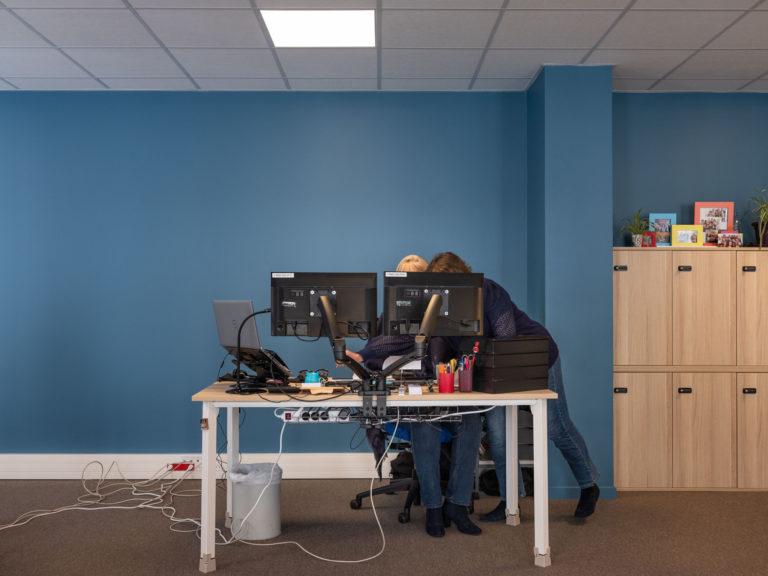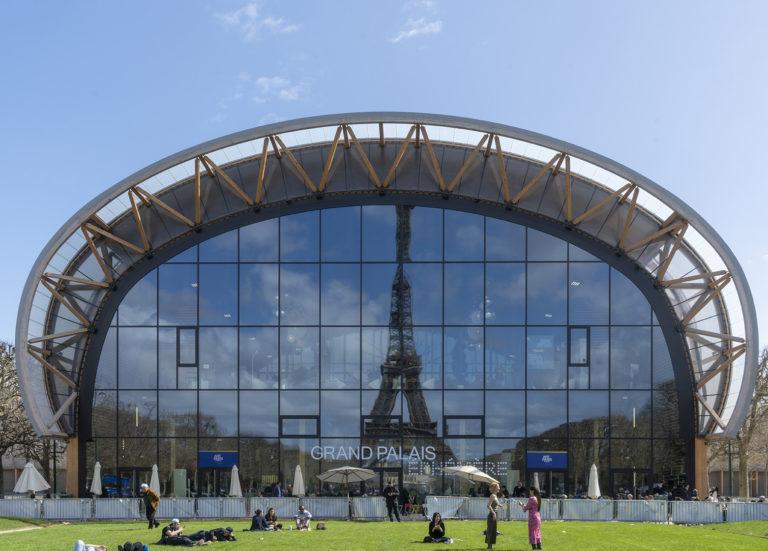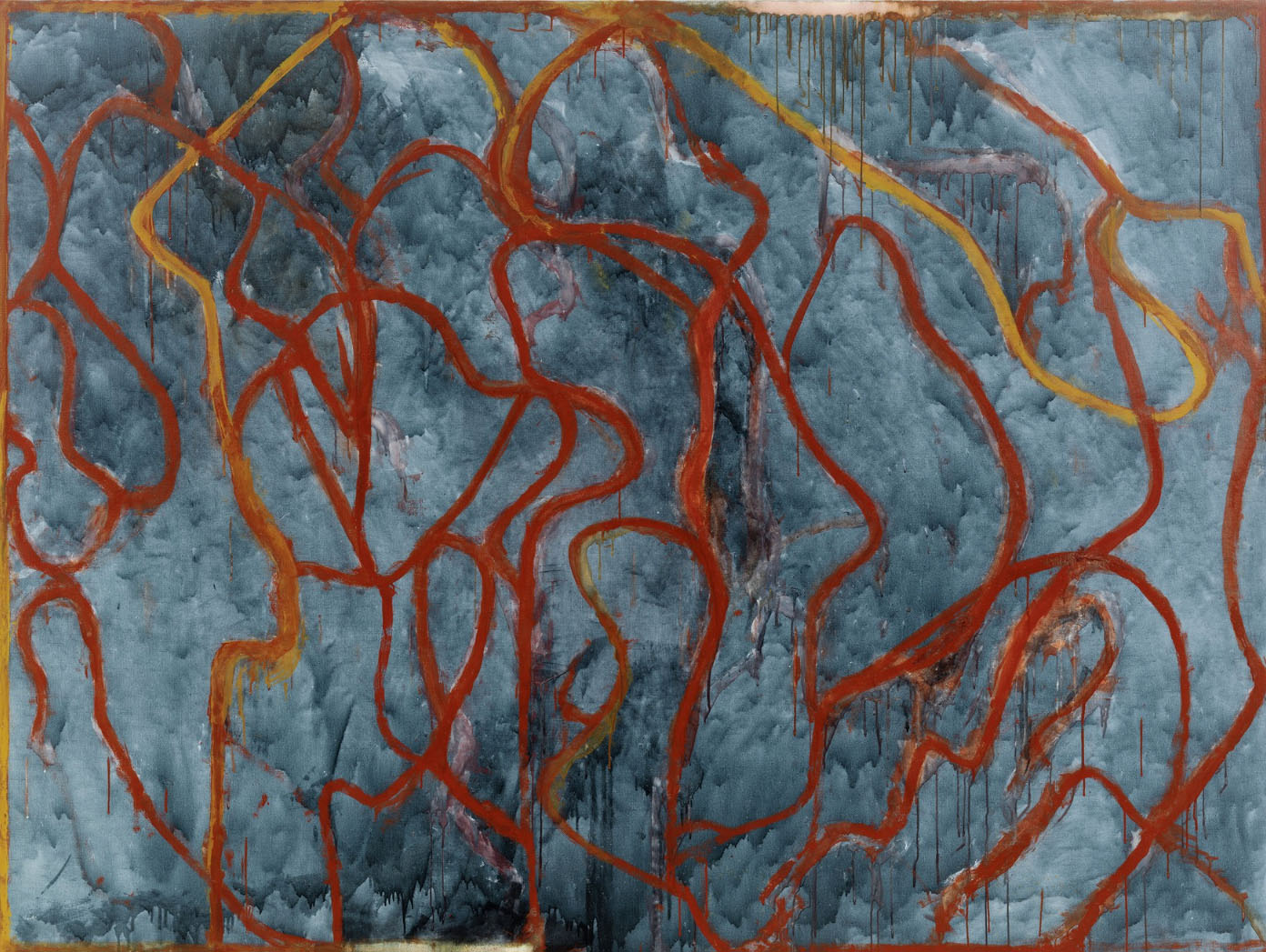La Memoria Verde
2019 - Film & Video (Film & Video)
13:00 minutes
Enrique Ramirez
Enrique Ramirez’s La Memoria Verde is a work of poetry, politics, and memory created in response to the curatorial statement for the 13th Havana Biennial in 2019, The Construction of the Possible . Other well known works by Ramirez feature the movement and endless symbolism of the sea—like the simultaneous engagement and retreat of the tide—but La Memoria Verde takes the land, plant life, and its human inhabitants as its subject. The film begins with a soft, green, algae-like image that waxes and wanes in focus, then gives way to swaying treetops blowing in a soft wind. The calls of jungle insects and other fauna blend with intermittent notes played by a man on a saxophone, and the landscape on the ground, invoke lush, fertile, deep greens as if to color even the brass-made timbre. A woman describes, in a soft but deliberate whisper, a series of declarations that cite the plight of the land and the immigrant, the task of memory and of identity, of resistance and survival. La Memoria Verde calls upon the vibrant but dreamlike imagery of unstable memories, drawing the viewer into a hazy world encompassed by low light and dark hue. The work explores a verdant world through sight and sound, navigating the surviving variations of life, both human and rooted. Using lushness and overgrowth as a gesture of assertion and resistance, Ramirez connects the constant conflict and fluctuation of survival that both nature and man have in common. The film tells of imprinted traumas and the ways in which they become visible as scars, or manifest in movements that either protect or enhance their memory. In La Memoria Verde these gestures consume both flora and fauna.
Enrique Ramirez’s highly politicized practice engages both personal recollections and gathered stories, questions notions of exile, displacement, loss of memory, and a changing sense of place. Growing up in Santiago, Chile, his father was a sail-maker and Ramirez’s process often returns to the sea to bolster his investigations of movement, discovery, and geo-politics. The artist describes art and filmmaking as methods to communicate the ways society moves in cycles, sometimes backward and sometimes forward, especially regarding issues of immigration, border politics, and national identity. His seductive films and installations are sites of contemplation and imagination in their depiction of boundless space and expansive landscapes.
Colors:
Related works featuring themes of: » Black-and-White Photography, » Collective History, » Color Photography, » Conflict, » Chilean
» see more

© » KADIST
Shilpa Gupta
2014These hand drawn maps are part of an ongoing series begun in 2008 in which Gupta asks ordinary people to sketch outlines of their home countries by memory...

© » KADIST
Shilpa Gupta
2008The three monkeys in Don’t See, Don’t Hear, Don’t Speak are a recurring motif in Gupta’s work and refer to the Japanese pictorial maxim of the “three wise monkeys” in which Mizaru covers his eyes to “see no evil,” Kikazaru covers his ears to “hear no evil,” and Iwazaru covers his mouth to “speak no evil.” For the various performative and photographic works that continue this investigation and critique of the political environment, Gupta stages children and adults holding their own or each other’s eyes, mouths and ears...

© » KADIST
Hank Willis Thomas
2012Bread and Roses takes its name from a phrase famously used on picket signs and immortalized by the poet James Oppenheim in 1911...

© » APERTURE
An-My LE
For the past two decades, An-My Lê has used photography to examine her personal history and the legacies of US military power, probing the tension between experience and storytelling....
Other related works, blended automatically
» see more

© » KADIST
Enrique Ramirez
2017Ramirez’s The International Sail is the fifth in a series that features an upside-down worn out, mended and fragmented boat sail...

© » KADIST
Shilpa Gupta
2014These hand drawn maps are part of an ongoing series begun in 2008 in which Gupta asks ordinary people to sketch outlines of their home countries by memory...

© » KADIST
Shilpa Gupta
2008The three monkeys in Don’t See, Don’t Hear, Don’t Speak are a recurring motif in Gupta’s work and refer to the Japanese pictorial maxim of the “three wise monkeys” in which Mizaru covers his eyes to “see no evil,” Kikazaru covers his ears to “hear no evil,” and Iwazaru covers his mouth to “speak no evil.” For the various performative and photographic works that continue this investigation and critique of the political environment, Gupta stages children and adults holding their own or each other’s eyes, mouths and ears...

© » KADIST
An-My LE
2010The print Patient Admission, US Naval Hospital Ship Mercy, Vietnam (2010) features an Asian Buddhist monk and an American Navy Solider on board the Mercy ship –one of the two dedicated hospital ships of the United States Navy– sitting upright in their chairs and adopting the same posture...
Related works sharing similar palette
» see more

© » EYE OF PHOTOGRAPHY
© 2023 All rights reserved - The Eye of Photography Olivier Culmann, URSSAF Normandie, site du Havre @ Olivier Culmann Le Havre, Seine-Maritime, Normandie, France 10/05/2023 © Olivier Culmann / Tendance Floue @ Thomas Jorion @ Sidonie Van Den @ Isabelle Scotta @ Carlo Lombardi S From October 21st to January 7th, 2024, for its 14th edition, 25 international photographers, both established and emerging, can be discovered in an open-air exhibition tour throughout the city, on the beach, and indoors at Point de Vue and Les Franciscaines...

© » SLASH PARIS
Anne Deguelle — L’Arctique fantôme — L'ahah Moret — Exhibition — Slash Paris Login Newsletter Twitter Facebook Anne Deguelle — L’Arctique fantôme — L'ahah Moret — Exhibition — Slash Paris English Français Home Events Artists Venues Magazine Videos Back Anne Deguelle — L’Arctique fantôme Exhibition Photography Upcoming Anne Deguelle, Glacier, 2014, 40 × 53 cm © Adagp, Paris, 2023 Anne Deguelle L’Arctique fantôme In about 2 months: January 27 → February 17, 2024 vernissage le 27.01.24, 17h → 21h exposition du 27.01 → 17.02.2024 L’ahah #Moret 24-26, rue Moret, 75011 Paris L’ahah est heureuse de présenter cet hiver en L’ahah #Moret une série singulière de photographies dans l’œuvre de l’artiste Anne Deguelle ...

© » EYE OF PHOTOGRAPHY
© 2023 All rights reserved - The Eye of Photography Art Paris 2023 Champ-de-Mars © Marc Domage Art Paris 2023 - Almine Rech Art Paris 2023 - Galerie Dina Vierny Art Paris 2023 - Galerie Zlotowksi Art Paris 2023 - Vue École militaire 1 The 26th edition of Art Paris 2024 will be held from April 4 to 7 at the Grand Palais Éphémère...
Other works by: » Enrique Ramirez
» see more

© » KADIST
Enrique Ramirez
2017Ramirez’s The International Sail is the fifth in a series that features an upside-down worn out, mended and fragmented boat sail...

© » KADIST
Enrique Ramirez
In Un Hombre que Camina (A Man Walking) (2011-2014), the sense of rhythm and timing is overpowered by the colossal sense of timelessness of this peculiar place...
Related works found in the same semantic group
» see more

© » KADIST
Jeffry Mitchell
2012Poised with tool in hand, Jeffry Mitchell’s The Carpenter (2012) reaches forward, toward his workbench...

© » KADIST
Noé Martínez
2019As he investigates the forms that slavery took through different events that occurred during the sixteenth century in the Huasteca region of Mexico, Noé Martínez tells, in a non-linear narrative, the history of human trafficking in Relación de tráfico de personas 1525-1533 I (Study of Trafficking of Persons 1525–1533 I) ...

© » KADIST
Karl Haendel
2011Haendel’s series Knights (2011) is a set of impeccably drafted, nine-foot-tall pencil drawings depicting full suits of armor...


